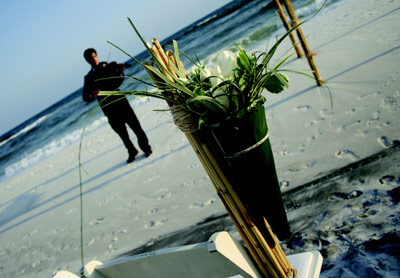 Spring is definitely in the air and many couples are busy planning a June wedding. Choosing the invitations, making the guest list, selecting the cake and most importantly the bride’s gown, are all priorities, but one of the most important elements of a wedding is the music.
Spring is definitely in the air and many couples are busy planning a June wedding. Choosing the invitations, making the guest list, selecting the cake and most importantly the bride’s gown, are all priorities, but one of the most important elements of a wedding is the music.
How does one choose the music for a wedding? There are many considerations to ponder. The venue will often dictate the nature of the music. Will the wedding be in a church, in a home, outdoors in
a backyard or a beach, a mountain setting or perhaps on a cruise ship? If it’s a church wedding there may be guidelines as to the type of music permitted. At secular sites there may be noise limits and
space allotted for a band. Consider the size of the ceremony site, as it may determine or limit the size of a musical ensemble.
Choosing music should reflect the tastes and personalities of the couple getting married. A young couple may want the music to be contemporary and popular, as opposed to a more mature couple
who may want classical or traditional music. The style of music chosen will most likely dictate the nature of the ensemble, vocal soloist or disc jockey performing the music.
The style of music will generally fall into one or more of these categories: traditional, contemporary, folk, pop, rock, etc. All of these styles may be played and /or sung by a vocal soloist or a small
ensemble. These may include organ or piano alone or with vocals or instrumental accompaniment. Organ and brass are a great combination. Piano, harp, string quartet, guitar and other small instrumental ensembles are often used depending upon the size of the venue and the mood of the wedding.
In a formal church wedding the music in the ceremony may include the prelude, processional, interludes (if used) and the recessional. The prelude music is played before the ceremony begins and
generally sets a nice relaxed, light mood. It usually lasts at least 15 to 20 minutes while guests are being seated.
Processional music should be celebratory and impressive announcing the appearance of the bride. The most traditional processional is the Bridal Chorus (Wedding March) from Richard Wagner’s opera Lohengrin. The interlude music is lighter and is often a vocal soloist accompanied by piano, guitar or organ. This music usually speaks of love and romance.
The recessional is used when the bridal party exits and is usually an upbeat, energetic, lively piece. The most traditional recessional is The Wedding March, by Felix Mendelssohn from A Midsummer Nights Dream.
Music during the wedding reception again most often reflects the couples taste and style. Traditionally there is a first dance by the bride and groom. This very special dance is usually a favorite of the
couple—”their song.” Music for dancing may be provided by a live band, small ensemble or a DJ playing a variety of songs. Unless the couple has friends or family that will volunteer their services there may be considerable costs for soloists and musicians.
A good wedding planner always has lists of musicians and DJ’s. Churches are a good source for wedding musicians and the yellow pages of your local phone book often lists musicians. Always audition
the soloists or ensembles to see if they are right for your needs.
You can save considerable money by hiring local nonprofessionals such as talented college students or amateur musicians. The right music at your wedding will not only entertain your guests but will set the mood and secure the memories for the most important day of your lives together.
“Life is a song—love is the music!”
Please submit your questions and comments to banddirector01@comcast.net.
Visit our website at www.danvilleband.org for up-to-date information about the Danville Community Band.